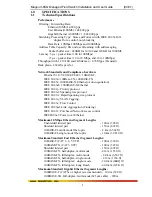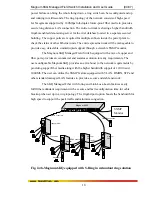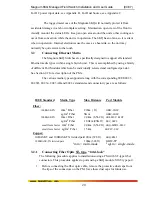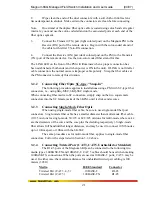
Magnum 6KQ Managed Field Switch Installation and User Guide (04/07)
10
www GarrettCom com
.
.
on the port. A fiber cable must be connected into a SFF port and the Link (LK) indicator
for that port must be ON (indicating there is a powered-up device at the other end of the
cable) in order for a LK LED to provide valid indications of operating conditions on that
port.
2.2.2
Four-Port Copper Module, 6KQ4-RJ45
The 6KQ’s 4-port Copper module, model 6K4-RJ45, provides four 10/100Mb switched
RJ-45 ports. The 10/100Mb
switched ports normally (as a
default setting) are independently
N-way auto-negotiating and auto-
crossover (MDIX) for operation at 10 or 100Mb speed in full- or half-duplex mode. (i.e.,
each independently selects a mode and speed to match the device at the other end of the
twisted pair cable).
(See Section 4.3 for auto-negotiation and MDIX details).
On the model 6KQ-RJ45 module, there are four LEDs for each port, two
integrated into the connector, and two below the connector. The LK (Link) LED
indicates “ready for operation” on that port when lit. The blinking ACT (Activity) LED
indicates receiving Activity on that port when lit. The 10/100 LED indicates operation at
100Mb speed when ON and at 10 Mb speed when OFF (when auto-negotiation is not
disabled). The FDX/HDX LED is ON to indicate full-duplex operation and OFF to
indicate the half-duplex mode. A twisted pair cable must be connected into an RJ-45 port
and the Link (LK) indicator for that port must be ON (indicating there is a powered-up
device at the other end of the cable) in order for a LK LED to provide valid indications
of operating conditions on that port.
Using the 6KQ (MNS-6K) management software, the user may disable auto-
negotiation and fix the desired operation of each RJ-45 port. The user may select 10Mb
or 100Mb speed and full- or half-duplex mode per-port as per user requirements. (See
Magnum MNS-6K Software Manual for details info.).
2.2.3 PoE (power pass-through), model P6KQ4-RJ45 (MDIX), 10/100Mb 4-port
The PoE (Power-over-Ethernet) RJ-45 ports are similar to regular RJ-45 ports,
except they have the capability of providing power on each port to power up the PD
devices, per the IEEE802.3af PoE standard. The power-pass-through PoE modules are
1 2 3 4
10/10
L
F/
AC
















































